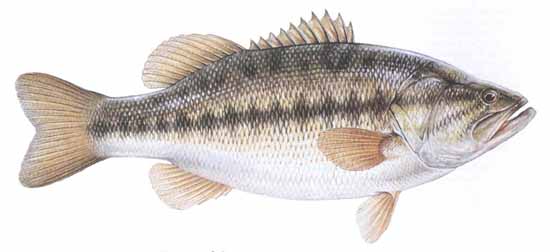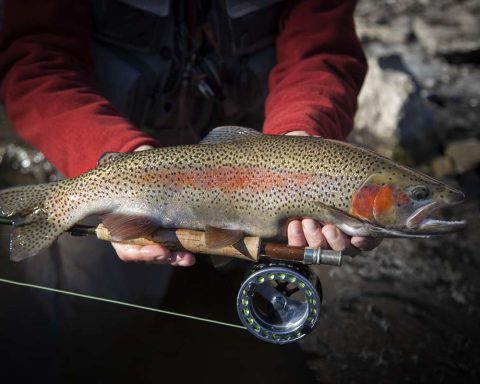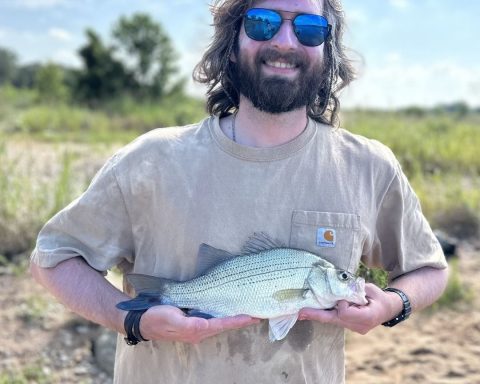Thanks to Texas Parks & Wildlife, you can find everything you need to know about fishing conditions in Canyon Lake.
GOOD. Water slightly stained; 71 degrees; 26.95 feet below pool. White bass and stripers sew excellent with daily limits topwaters and jigging spoons. Stripers sew schooling between 7-11 a.m. on the lower end. Bass are excellent on chatterbaits, crankbaits, wacky rigged senko over grass and hydrilla. Numbers and size have been great. Report by Charles Whited, Barefoot Fishing Tours.
For general information about Canyon Lake conditions, click HERE. All species are currently managed under statewide regulations. You must have a Texas fishing license to fish in Canyon Lake.
Zebra Mussel Alert – To prevent the spread of zebra mussels, the law requires the draining of water from boats and onboard receptacles when leaving or approaching public fresh waters. Click HERE for more information.
Go Fish!
Here’s a list of Canyon Lake’s predominant species:
- Largemouth bass
- Smallmouth bass27
- Guadalupe bass
- White & striped bass
- Catfish
About the Lake
According to the Texas Parks and Wildlife Department, Canyon Lake is dominated by steep rocky banks, isolated flood timber, and clear water, which are typical of a highland reservoir.
The water becomes stained as one moves up the reservoir and into the river.
In most of the lake, rock ledges, rock piles, steep drop-offs, flooded timber, and a few marinas provide cover for game fish.
Cedar-tree and plastic fish attractors were added to provide additional structure. To see an online fish attractor map, click HERE.
The river portion of the reservoir is dominated by flooded timber, rock ledges, and lay downs. When the water level is high, largemouth bass anglers should concentrate on flooded terrestrial vegetation.
Tips and Tactics
Largemouth bass anglers are most successful in Canyon Lake during spring, fall and winter months. Bass fishing on this highland reservoir can be difficult even for experienced anglers.
Topwater baits like buzz baits, Zara Spooks, and Pop-Rs are popular in the early morning and evening hours. On cloudy days, consistent topwater action occurs all day. Crankbaits are very popular fished along main-lake points, rocky shorelines and flooded timber.
Popular soft plastic baits include worms, spider grubs, grubs and soft-jerkbaits. Try spinning gear and light line (6-10 pound) in main-lake clear water situations.
For white and striped bass in the summer and early fall, look for schooling activity around main-lake points and humps. These fish can be caught using topwater baits, jiggling spoons, grubs and rattletraps.
Poplar techniques for striped bass are trolling with in-line spinners and crank baits and vertically jiggling white buck-tail jigs.
Live bait presentations for both striped and white bass are popular year-round.
White bass spawning migrations occur from February through April. During these months, white and striped bass can be concentrated in the river portion of the reservoirs. Anglers catch them using small, in-line spinners, small jigs, jiggling spoons, small crank baits, and live bait presentations.
Catfish anglers can find channel, blue and flathead catfish throughout the reservoir. Channel catfish dominate the fishery. Stinkbait and cut bait work well for channel and blue catfish, while live bait is preferred for flathead catfish. The most-consistent catches come from the upper third of the reservoir. Trotlining is very popular for flathead catfish.
Angling opportunities
According to the Texas Parks and Wildlife Department, largemouth bass is the most-popular and most-abundant sport fish in the reservoir. White bass and striped bass also provide an excellent fishery.
Stripers provide excellent angling because of their growth potential and strong fighting characteristics.
An annual Texas Parks and Wildlife Department stocking program maintains the fishery because striped bass do not successfully reproduce in this reservoir.
Crappie fishing is generally poor, although occasionally good catches can be made, especially along standing timber in the river.
Angling for redbreast sunfish provides an excellent fishing experience for families.
Channel, blue and flathead catfish are present in good numbers.
A low-density smallmouth bass fishery exists. These fish were stocked in the 1970s and 1980s and persist through natural reproduction. Fishing for smallmouth is better in the lower one-third of the reservoir.




